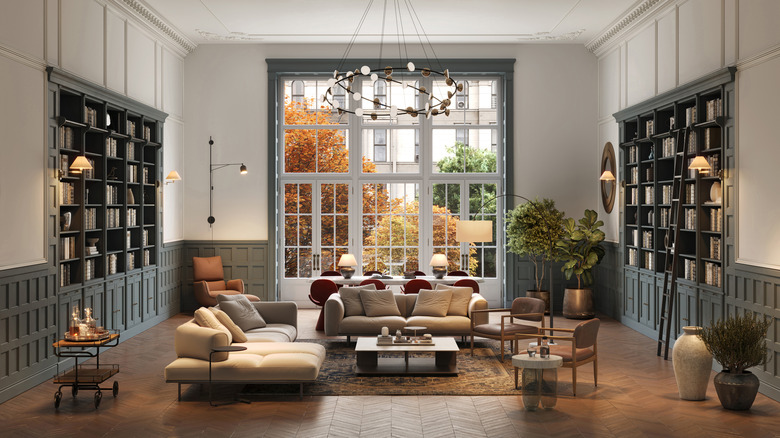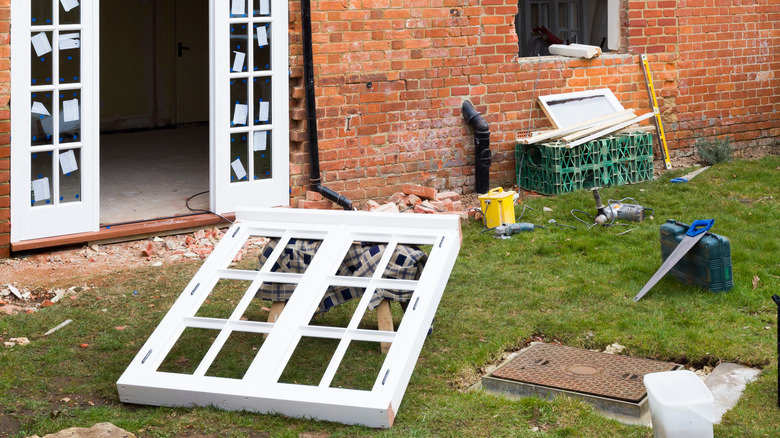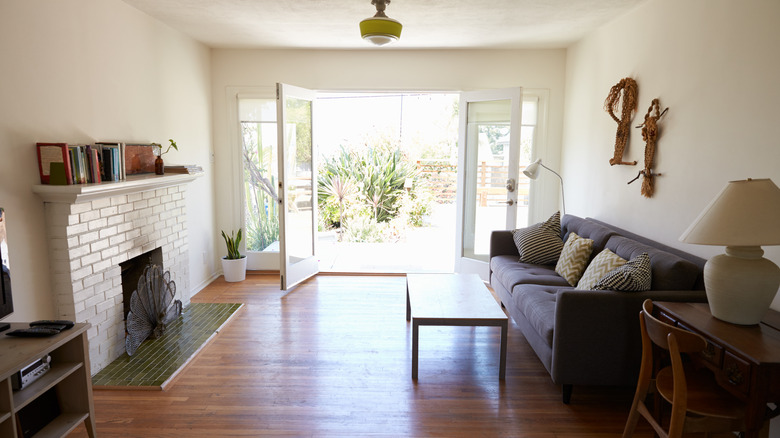The Downsides To Installing French Doors In Your Home
French doors add a certain level of elegance and character to a room. They instantly make you think of a Martha Stewart-inspired space, where you can throw open the doors and walk into your charming garden and nearby vegetable patch. Due to their glass, they inspire a sense of indoor-outdoor living, and most people want them installed so they can keep them open during the day. Because of this, it extends your indoor living space, making the patio outside feel like an extended living room. While French doors clearly come with lots of benefits, they also have their fair share of drawbacks. Specifically, they're typically more expensive than other exterior doors, they're not as energy efficient due to their glass, and they can make furniture arranging difficult due to the fact two doors need to open inside the room.
These downsides can make or break a remodeling project for several reasons. If you're on a strict budget, French doors might blow it out of the water. Not only will the upfront costs be pricier than regular exterior doors, but you might have increased electricity bills down the road due to losing heat or cooling from the window panes. They can also mess up your plans for how to use the space, since you have to account for the swinging doors. Here is a deeper look into what to consider before investing in French doors.
There are high costs involved
French doors are one of those home features that will never go out of style, but they have their fair share of downsides. For example, because they are more decorative and intricate than solid exterior doors, they fetch a higher price tag. So, how much do French doors cost? You can expect to pay anywhere from $500 for an affordable vinyl option to $4,000 for custom or trendy designs. The price varies, and it depends on how big it is, what material it's made of, the type of glass you use, how many glass panes you have, and which vendor you go with.
But the costs don't end there. Unless you're a contractor or skilled handyperson, you will likely need to hire a professional to install them. This can tack on an average of $400 to $1,400 to your bill. In comparison, a simple fiberglass door costs as little as $150 to buy and an average of $100 to $360 to install.
The costs don't end there. Since they are covered in glass, they aren't as energy efficient as solid wood or fiberglass options. However, you can combat this loss by looking for doors with double-glazed and dual-pane glass, which have far better insulating abilities. This means you're better off skipping antique or salvaged French doors since they will likely not be glazed and have single-glass panes. This will make them very poor insulators, allowing warm or cold air to seep out of your home.
They take up a lot of space
Another drawback to French doors is that the two doors need to swing inward, which can make it difficult to stage the room the way you intend. For example, if you want the French doors to be in front of your dining table, you need to move the table far enough away that guests won't have to get up from their seats for you to open or close the doors. Similarly, if you want the double swinging doors in your living room, you can't put side tables or couches within its swing path, or else you risk knocking and chipping both items every time you open the door. This means that your room also needs to be relatively large. French doors aren't the best choice for smaller areas due to the fact they need a certain amount of clearance to function properly.
You might think that a good workaround to this predicament is to have the doors swing outward rather than inward. While that would solve the issue, it's not recommended to do that for exterior doors because they're not as secure. If the doors swing outward, then the hinges are exposed on the outside, making it easier to remove the door from its frame. This opens up your home to the risk of break-ins, defeating the purpose of a quality exterior door.


